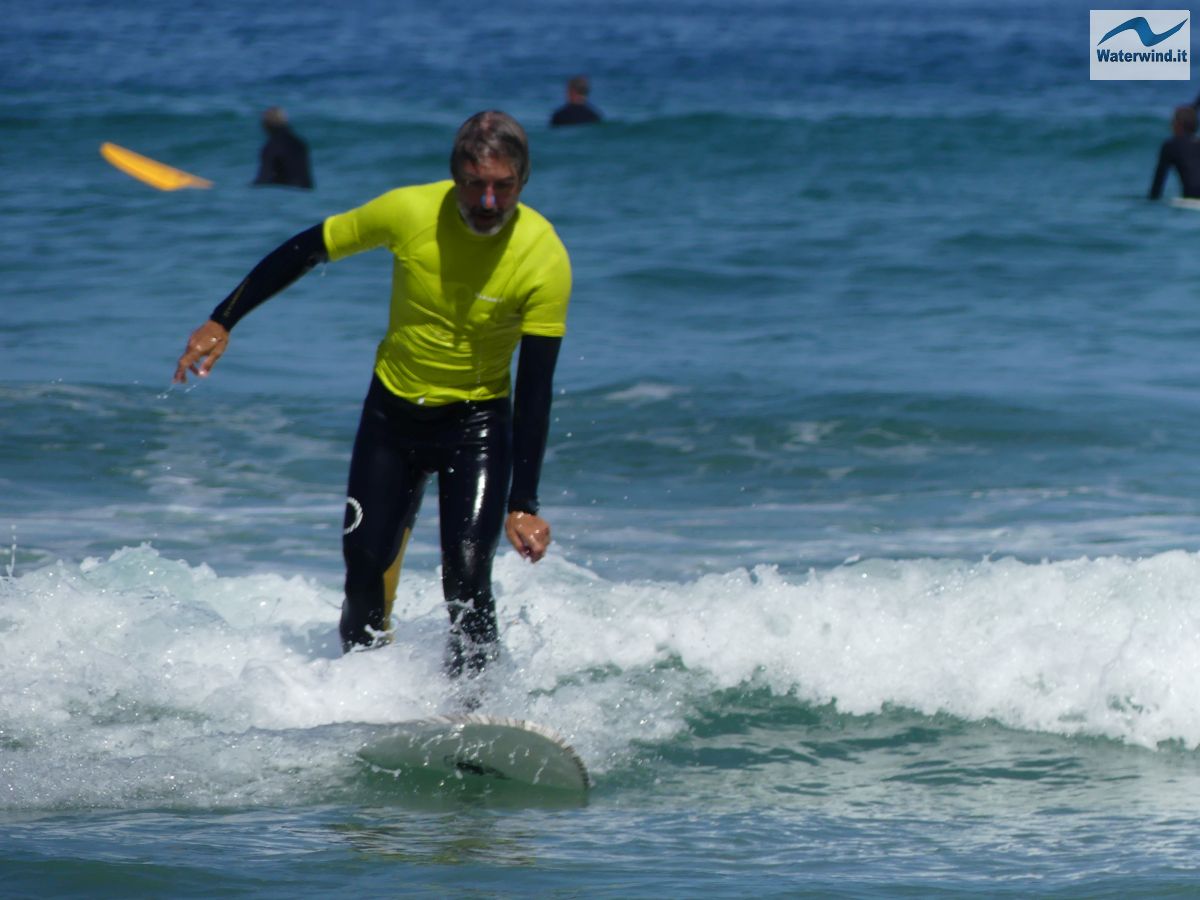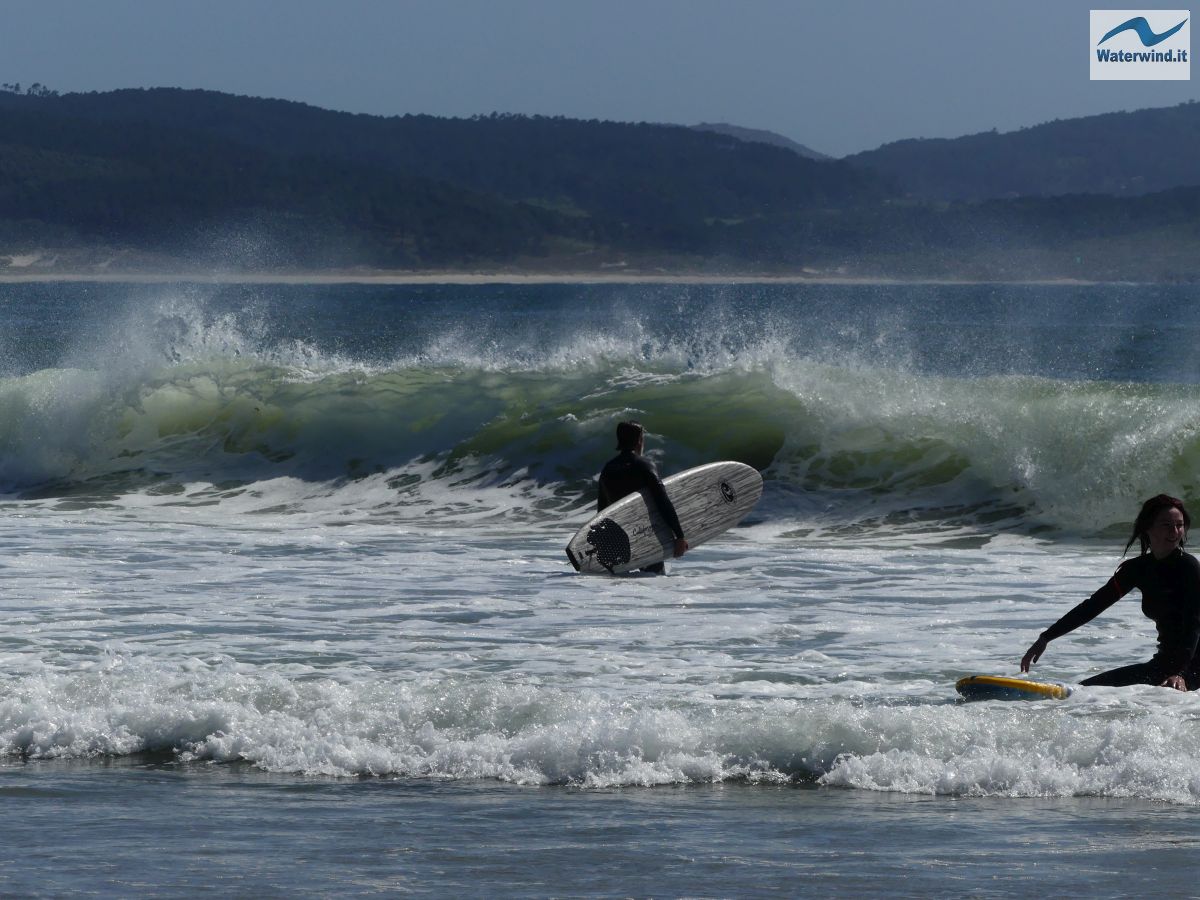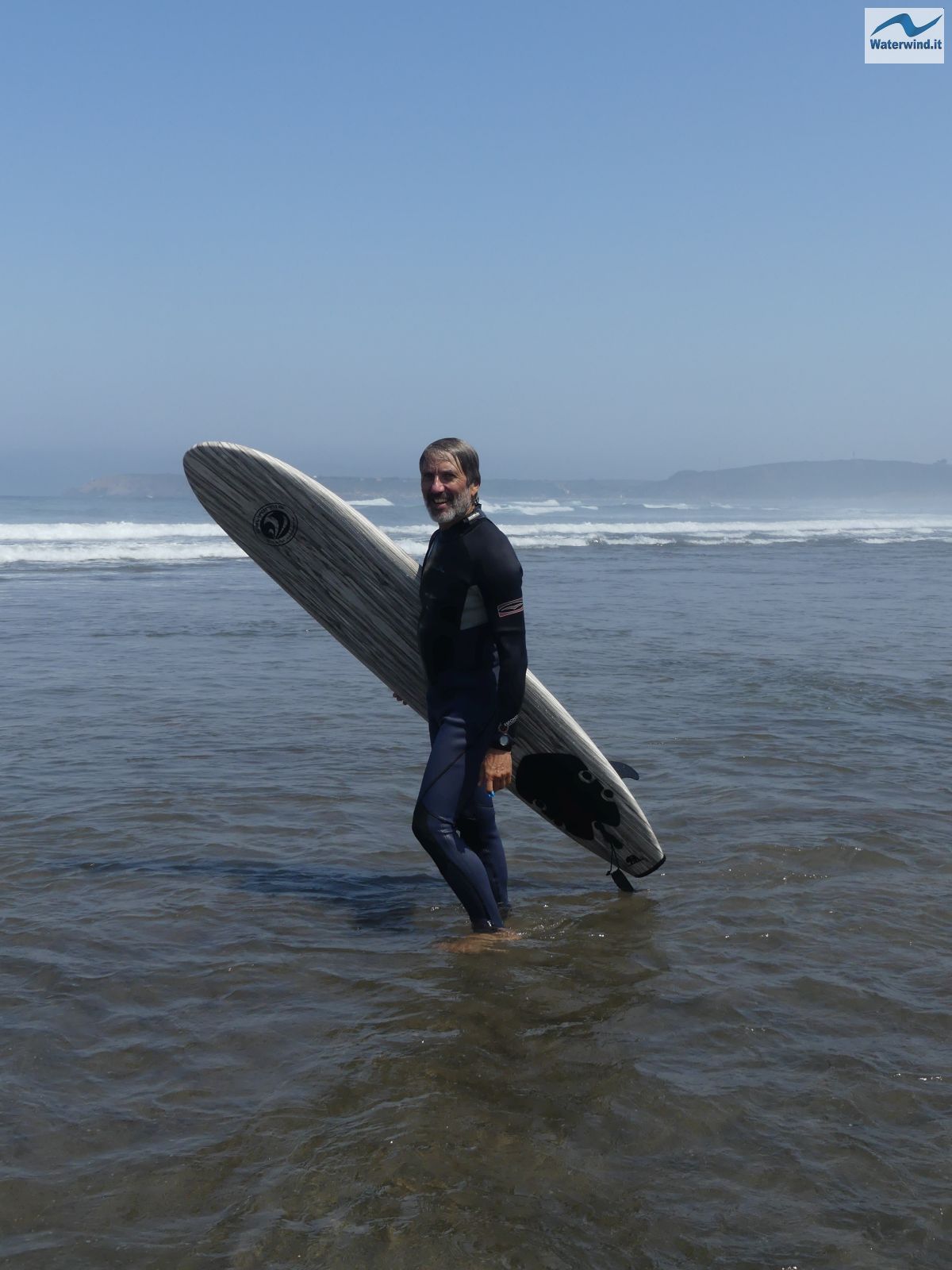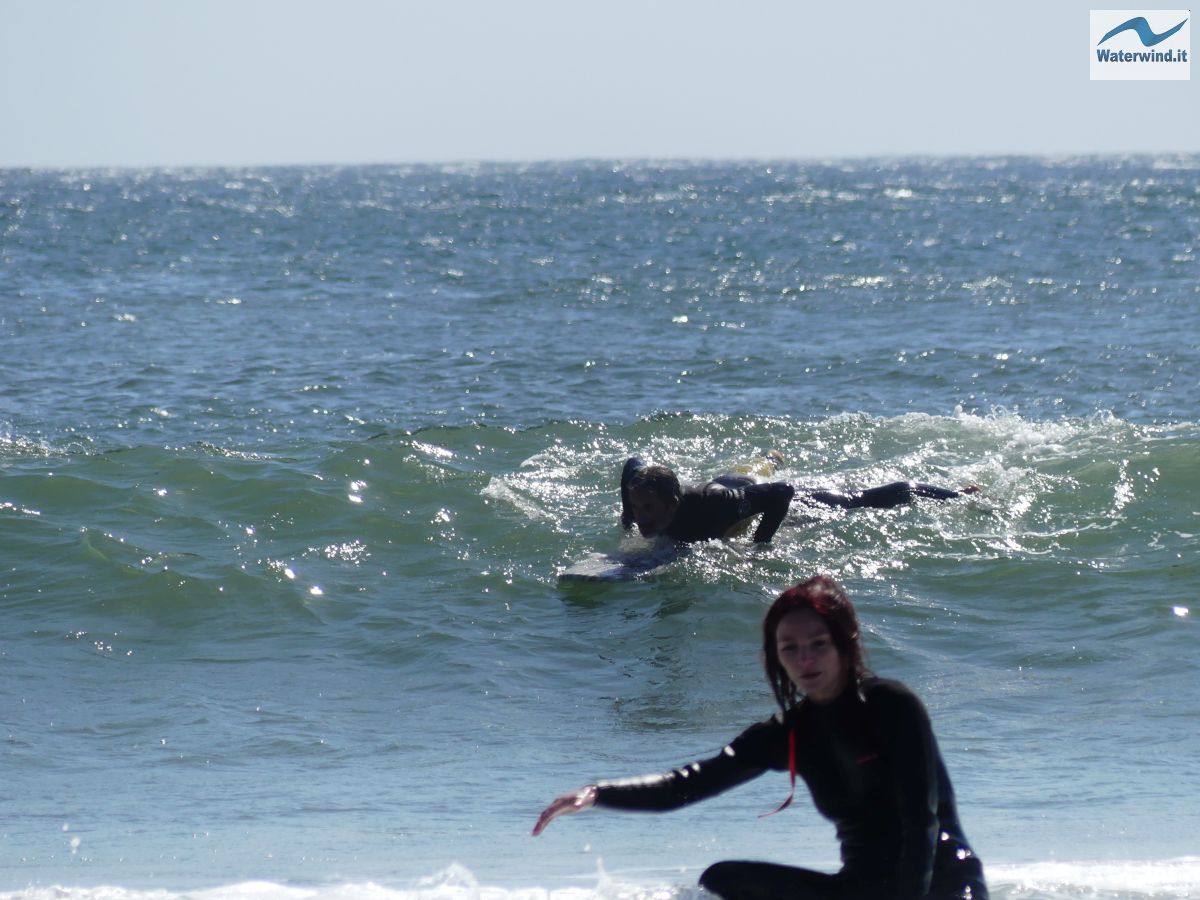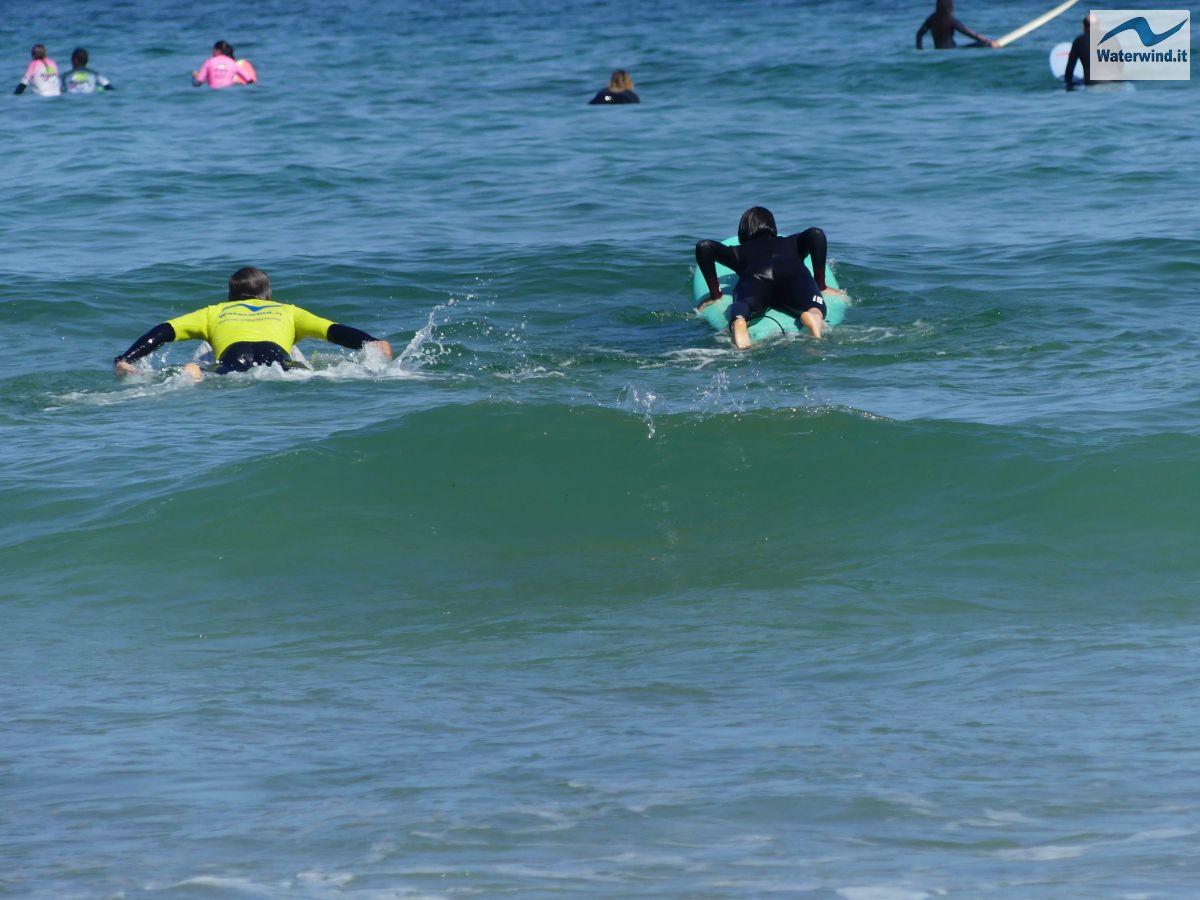Surfing is a really fun and engaging sport. It is also practical, and quite cheap. In this article, I will tell you about my first experiences as a beginner with a Surfboard.
Surfing: my first experiences
I have been surfing occasionally for a few years. I have tried surfing in Portugal, England, and Morocco, when I was on holiday. But it has always been for occasional and sporadic sessions. For me, being a windsurfer, it has often been natural to try surfing to exploit the waves, waiting for the best conditions for windsurfing, or after them.
But my assiduous frequentation of Galicia, in Spain, a region that offers beaches and wonderful conditions for surfing, has, finally, led me to buy my first board, to take with me on holiday in Spain, this summer 2024. And, probably, a new passion was born.
As a first board, after having done some rentals and gained some experience, I decided to buy a Softboard. These are boards with a generally generous volume, good length and width, and therefore stability when, having caught the wave, you have to stand up. But, above all, this type of board is distinguished by the foam deck covering, or more generally by soft material on deck. This is essential when you are doing your first sessions, because, typically, beginners are "wiped out" by the waves, due to inexperience; so, they often roll with the board, and can be hit by it. The soft covering of the deck absorbs impacts. In addition, this type of board, generally, has plastic fins, and not resin or carbon ones. And this also makes any hits received less dangerous.
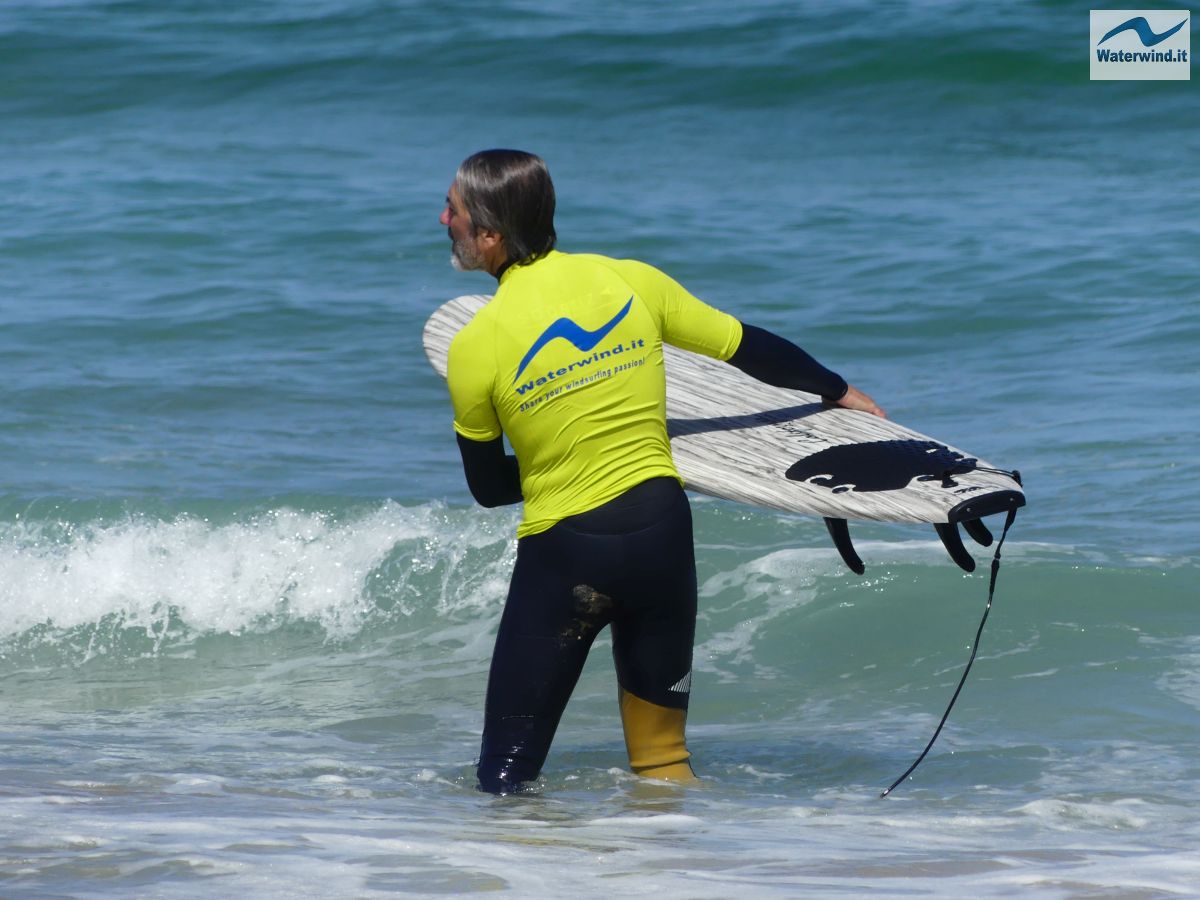
Softboards generally have lengths ranging from 7 to 9 feet, and volumes from 50 to 70-80 liters. In my case (I weigh 72 kg, and am 178 cm tall), I opted for a 7-foot board, and 65 liters, to start. I decided not to take an 8-foot, both because it is a size that makes the board rather bulky and not practical to transport, and because the 7-foot, on paper, can also guarantee me some approach to changes of direction in surfing, once I learned to stand up. With a larger board, I would then have risked finding myself with a product that I would not have enjoyed much any more, once I would have learned the take off (planing start on the wave), and to stand up on the board. It is clear that with a 7-foot (less stable than an 8, with a larger volume), I had a few more problems at the beginning in learning the technique to stand up (and to remain standing ...).
In short, I bought a CBC (California Board Company) SOFTBOARD FUN 7'0, a product that turned out to have good performance (quick planing start, good speed, and reasonable stability), but which showed some construction problems.
With this board, I set off for Northern Spain.
The first sessions were done in spots with medium-small waves. The first ever session was in Liencres, in Cantabria, with somewhat foamy waves, but I liked the context of the spot. Then, I tried Salinas in Asturias, again with somewhat chaotic waves (but, they tell me that it can also offer nice conditions, even if the panoramic view of the spot is not very nice, due to the palaces on the seafront). Finally, I went out in Playa de Nemina, Esmelle, Doninos and Pantin, in Galicia, with really nice glassy waves (and in Esmelle and Doninos, not too small - even 1.5 meters, and more).
Being self-taught at the moment (but I will take some lessons, sooner or later), I watch others riding, and also reason over the sensations I receive when I am riding, to learn the technique.
Before entering the water, I do some warm-up exercises. The first thing I look at, before entering, is the point (or points) where the waves rise, their size, and whether they are lefts or rights. Then, I try to identify the "exit channel", or the point where the waves do not break, and where there is a bit of current that takes them out. Paddling with my arms, lying on the board, or walking in the water with the board, I head towards the point where the waves, of the size I have chosen, break. At the moment, I try to surf waves of about 1 meter, at least in the ocean, where, behind the wall, the waves have a considerable mass of water, which guarantees a powerful push when the wave breaks....
So I try to select the waves, taking advantage of the most beautiful ones (with a steeper wall), and which do not seem to break too soon. The right timing is also a matter of luck... and often I happen to catch the waves, when they're foamy, i.e. when they have already broken (but maybe they still have a good push).
When I manage to catch the wave, I try to stand up quickly. I have understood some things about catching the wave, and about standing up on the board.
To catch the wave, it is important not to sink the stern of the board too much, if the wave is not very big, compared to the size of the board. Sinking the stern too much, as in windsurfing, causes the board to oppose a lot of resistance to longitudinal sliding and therefore hinders planing. So, I try to position myself with my torso just beyond the middle of the board (towards the bow). Only if the wave is big compared to the length of the board, I think it is better to move the body position a little back to avoid digging the bow into the wave, when you go down its too steep wall.
As for standing up on the board (pop up after take off), I understood that you have to try it as soon as possible, that is, as soon as the board has acquired a good speed, because the speed guarantees better thrust to the hull of the board (lift), and makes it more stable when you stand up, also forgiving a less than perfect positioning of the feet. To stand up, I hold the board with both hands on the edges (rails, but it would be better to put your hands open on the deck sides, to cause less drift) and try to position my feet, again, in such a way as not to sink the stern of the board too much: I position the front foot more or less in the center of the board, and the back foot 20-30 cm further back, towards the board tail. I try to position my feet along the longitudinal axis of the board, so as not to unbalance it too much laterally. I am Regular (because I am right-handed and not left-handed), and therefore I position my right foot towards the tail. The Regular, in fact, keeps the right leg behind and the left forward; the Goofy keeps the left leg behind and the right forward.
As long as the board is fast, I manage to stay upright, quite well. But I also understood that at the end of the surf, diving is an art... in this sport. You have to do it with style!
When taking off, you should not start perpendicular to the wave wall, but in an oblique direction, where the wave is not foaming but tubing, so as not to lose too much contact with its wall, and moving too much away from it.
Obviously, at the moment, there are more waves that break on my head than the ones I can catch. But even catching water bombs on the head requires technique and "style".... I move towards the bow of the board with my torso, if I'm lying on it, and when the wave is about to break on me, I dive under, pushing the nose of the board under, as well, to escape its power as much as possible. As soon as I resurface, I paddle decisively with my hands, to counteract the flow of water behind the wave.
I have already realized that surfing is a rather physical and tiring sport, but it can keep you in great shape. If I can do a two-hour waveriding session in windsurfing, I don't ride more than an hour, when surfing.
When you are in the water, you also have to pay attention to the "rip curls", or currents that bring the water, that entered the bay with the breaking waves, back out to sea. First of all, if you end up in them, they can take you away from the area where you catch the waves, or take you to the area where other waves break, maybe bigger ones, if there are more peaks in the spot, as happened to me in Doninos, in Galicia. Or, they can take you out to sea; to get out of them, you have to swim with the board transversely to the direction of the current.
The next step will be to learn to change direction to the board and make turns, once I have stood up.
To conclude, surfing is a sport that has won me over. It's practical (just put on the wetsuit, and grab the board, and you're ready to get into the water in a few minutes), and it's cheap (a wetsuit costs 100-200 euros, and a new board costs on average 500-700 euros). The spots, generally, are in very beautiful landscapes, and it's a sport (unlike many other water sports - including windsurfing) practiced equally by males and females, with a mixed human kind, and therefore more pleasant. Personally, I also like the cool and diverse human environment... that revolves around the surf schools/centers, and their bars/restaurants.
Unfortunately, even if I haven't experienced it yet, in some spots, it is affected by the plague of localism....
Moral: surfing, for me, will be a nice alternative to windsurfing, when there are good waves, and there's no wind. And in fact I'm already thinking about my next board: a Fish, or a Longoboard?
If you have any comments, please post them below the article.
Holà. Fabio
Without your Support, Waterwind wouldn't exist. Become our supporter! If you want to advertise with us, read here, or contact us. Collaborate with us. Read here! Buy our Gadgets! Visit our YouTube channel!




